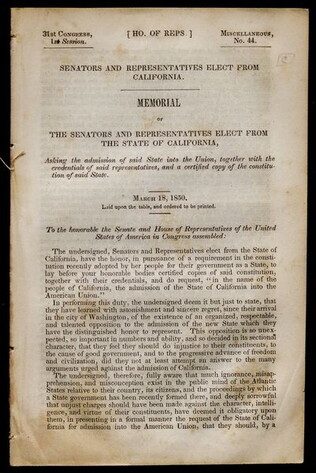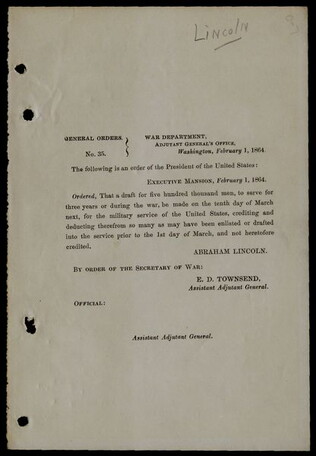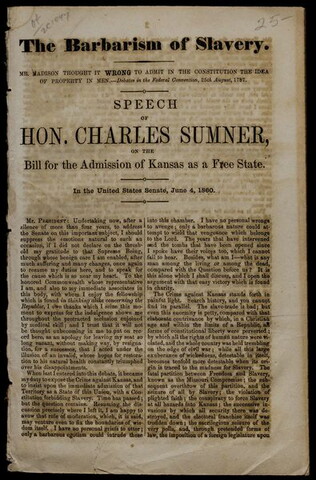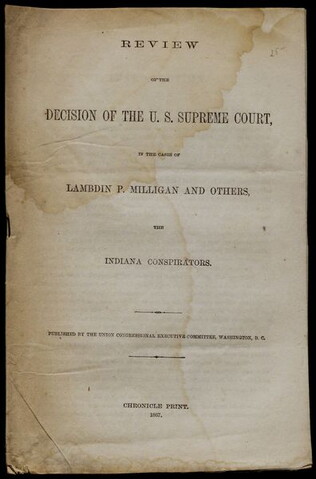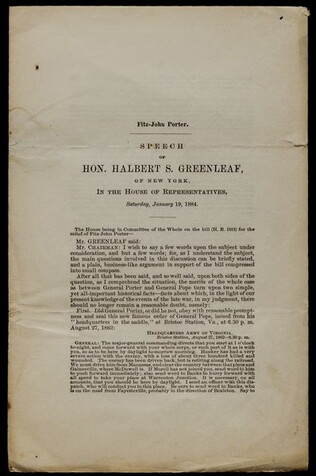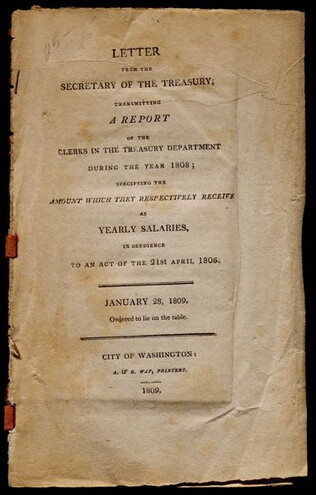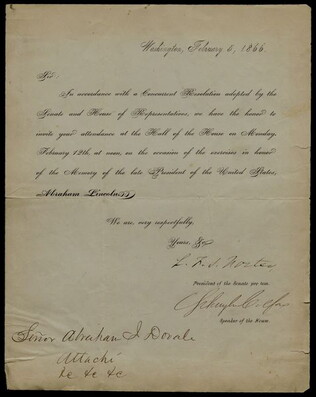18 March 1850
Gwin, William M., 1805-1885
Memorial of the senators and representatives elect from the state of California...
Title continues "asking permission of said State into the Union, together with the credentials of said representatives, and a certified copy of the constitution of said State." House of Representatives Misc. No. 44. Plea signed by William Gwin...
GLC08439
